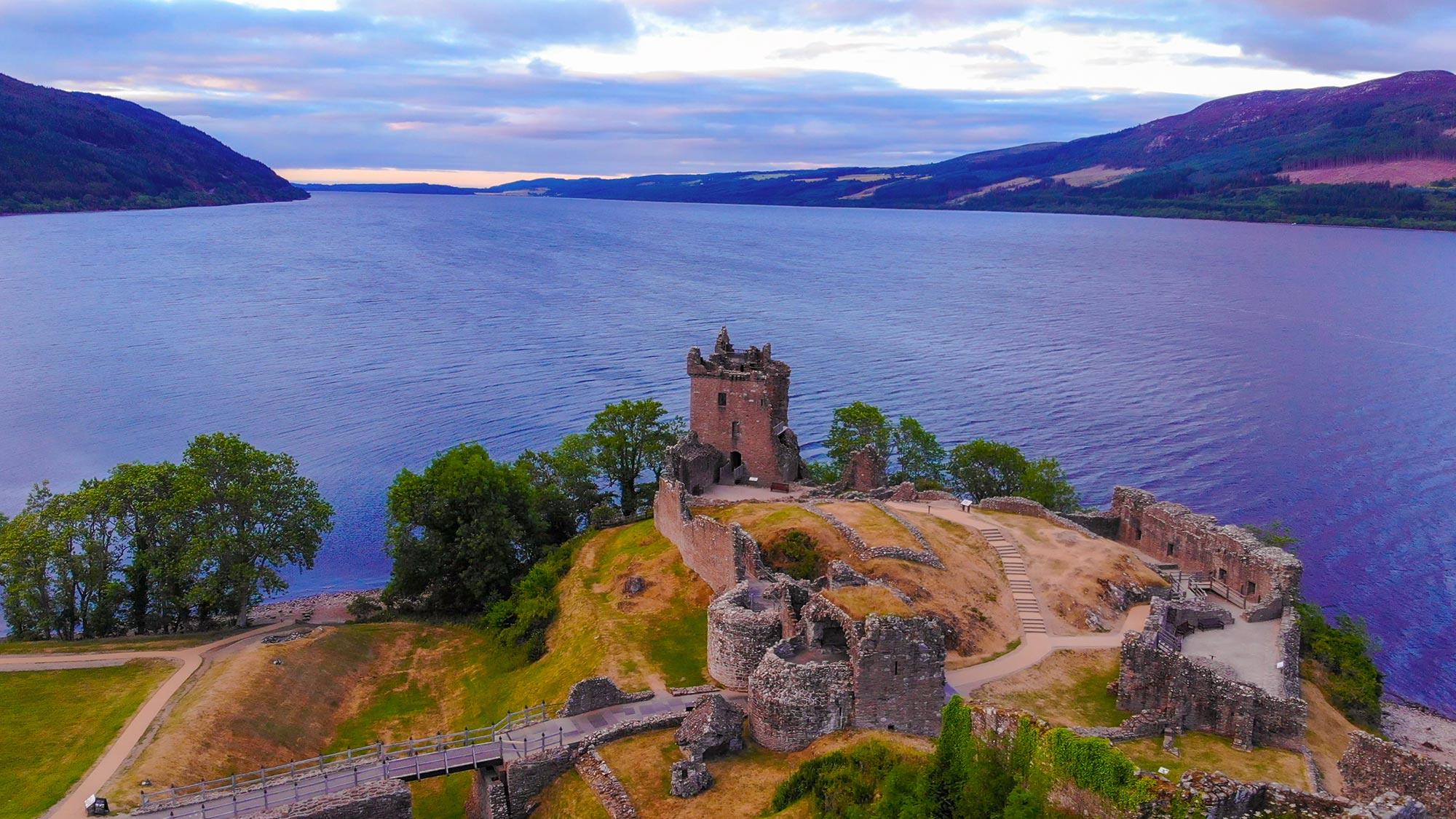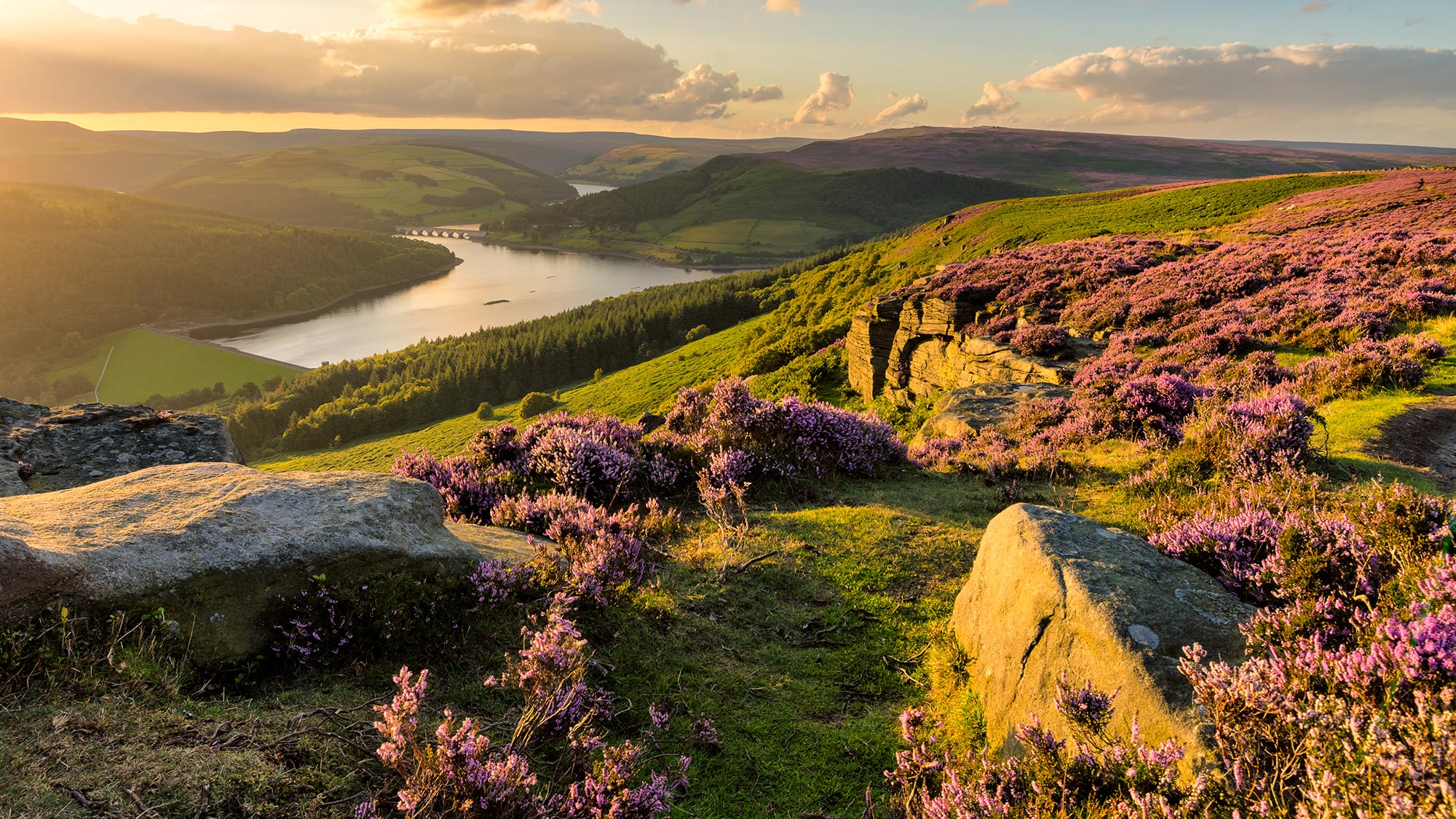The breathtaking countryside in Great Britain is stunningly diverse and waiting to be explored. Here are five of Britain’s must-see natural attractions all within easy reach of major cities, from the mysterious Loch Ness and beautiful Lake District, to the iconic white cliffs of Dover, sprawling Snowdonia National Park and the UNESCO World Heritage Site on the Dorset Coast.

LOCH NESS
SCOTTISH HIGHLANDS
Loch Ness needs no introduction; but there is so much more to this intriguing 23 mile (37 kilometres) stretch of water and the mysterious creature that is believed to lie within. There’s no doubt the elusive ‘Nessie’ is what draws crowds to its shores, but combining a monster hunt with an exploration of the area will reveal diverse countryside, local wildlife, impressive Scottish castles and quaint villages. The best way to explore the loch is by car, with Inverness the nearest major city. Head south from Inverness and jump on the A82 which hugs the northwestern shoreline, or opt for the slower pace of the B862 which runs down the opposite shore.
Stop at Drumnadrochit and spend some time learning about the geology of the loch and the legendary monster, before continuing down the road to Urquhart Castle which sits right on the shores of Loch Ness. At the very southern tip of the loch is Fort Augustus, best known for its canal that runs through the centre of the village, as well as the popular Clansmen Centre which celebrates life in the 17th-century Scottish Highlands. From Fort Augustus, you can continue south to the adventure capital of Fort William, or head back up the loch to Inverness. The round trip from Inverness will take just over two hours (add some time for monster hunting, of course).

WHITE CLIFFS OF DOVER
DOVER, ENGLAND
The sheer, white chalk cliffs overlooking the Strait of Dover form one of the most iconic natural landmarks in Great Britain. The Strait of Dover is just 33 miles (55 kilometres) wide, meaning on a clear day the French coastline is visible from atop the cliffs. This proximity to mainland Europe means the cliffs were the first line of defence in times of war, and have come to symbolise British strength. The area is filled with great walks, with the rare chalk-grassland providing a unique environment for birds, butterflies and wildflowers.
Dover is under two hours’ drive or an hour train ride from London to Dover Priory, making it a great option to extend a visit to include the fabled cliffs, explore the glorious countryside and coastline, plus visit the city and its impressive fortifications, including one of the largest castles in England, Dover Castle.

SNOWDONIA NATIONAL PARK
NORTH WALES
Snowdonia National Park covers more than 2,000 square-kilometres of awe-inspiring natural landscapes in North Wales. It is the largest, highest and oldest Welsh National Park, containing the tallest peak, highest waterfall and largest natural lake in the country. Hikers flock to Mount Snowdon and the well-defined trails, where those who make it to the peak can reward themselves with a break at the visitor centre. Coed y Brenin, north of Dolgellau has long been popular with mountain bikers, as the graded trails offer something for riders of all experience and ability.
Visitors not wanting to explore by foot or bike can jump on the Snowdon Mountain Railway, including the ‘Snowdon Lily’, a heritage steam engine that is a reconstruction of the original train that serviced the area from 1896. The journey to the summit is an hour, with a 30-minute stop to explore the peak.
North Wales can easily be reached by car from Manchester or Liverpool in around two hours.

LAKE DISTRICT
NORTHWEST ENGLAND
Spend any time in the Lake District, and you’ll quickly understand how it came to inspire great literary minds. William Wordsworth and Beatrix Potter both called the Lake District home, and every year visitors flock to the region to explore the stunning mountains, valleys, towns, villages and of course, the lakes.
The town of Windermere is the best place to base yourself to explore the rest of the National Park. Start with Windermere, the largest lake in England, where visitors can take a scenic boat ride, before exploring the quieter western side of the lake, with peaceful walks and the historic Wray Castle. South of Wray Castle is National Trust’s Hill Top, the location where Beatrix Potter penned some of her best-known stories, and is open to visitors.
The Lake District is a must-visit for avid hikers, catering for those of all abilities. Some of our favourites are the gentle lakeside circuit at Buttermere, moderate climb Cat Bells, or the challenging Scafell Pike and sheer ridgelines of Helvellyn.
All of this is just two hours from Manchester by car.

JURASSIC COAST
SOUTH-WEST ENGLAND
Stretching over 95-miles (152 kilometres) from Exmouth in East Devon to Studland Bay in Dorset, the Jurassic Coast tells the near-complete story of the Triassic, Jurassic and Cretaceous periods – more than 185 million years of history. It is this significance that led to it becoming England’s first natural World Heritage Site in 2001. One of the best ways to explore the Jurassic Coast is by foot, with the South West Coast Path spanning the entire coastline. Walk along the cliff-top paths to see some of England’s most spectacular features such as the phenomenal shingle bank known as Chesil Beach and the limestone arch of Durdle Door.
Fossil hunting is one of the most popular activities along the Jurassic Coast. The best place to search for fossils is Charmouth, and there are a number of guided fossil walks in the area. Other parts of the coast are sensitive, so it is recommended to consult local information before fossil hunting. There are also a number of great museums all along the coast, with exceptional fossils on display.
The Jurassic Coast in Dorset is three hours from London Waterloo by train.

